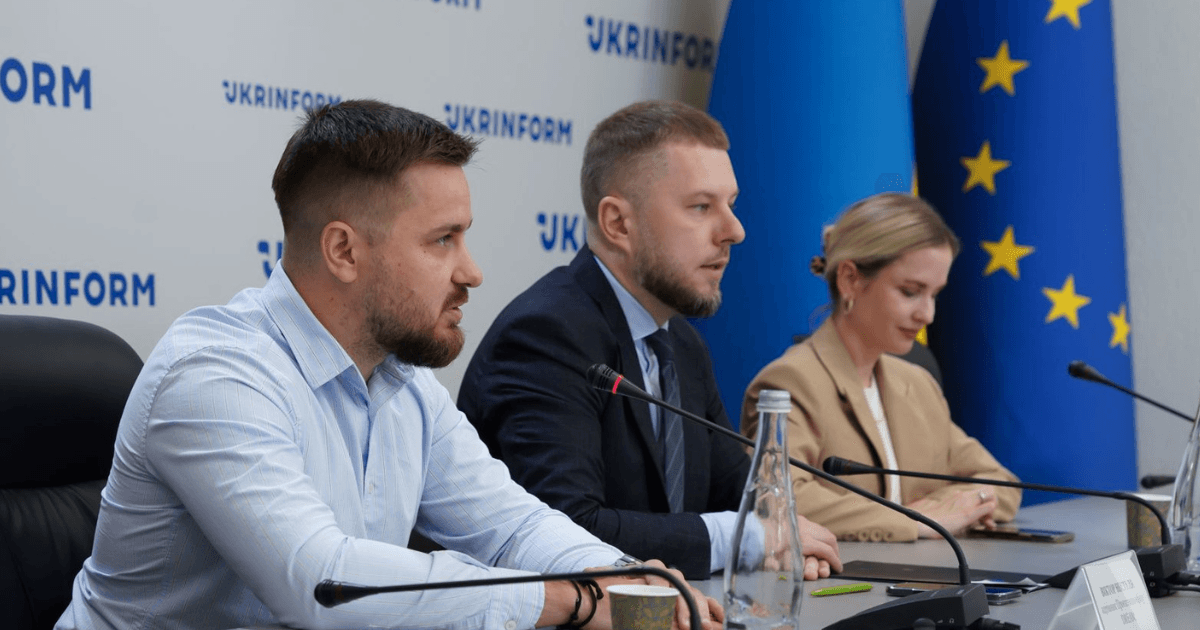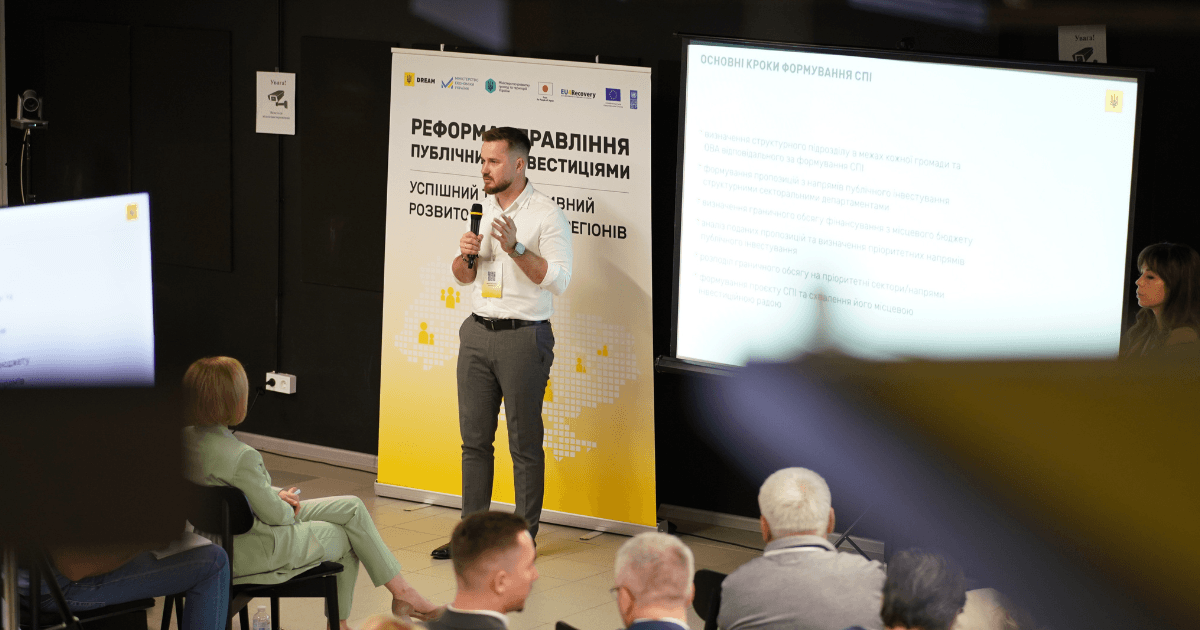
The second in a series of regional events, initiated by the Ministry for Development of Communities and Territories, the DREAM Project Office with the support of UNDP and the Government of Japan, took place in Dnipro. These meetings aim to clarify the essence of the Public Investment Management (PIM) reform and its practical implementation features at the local and regional levels.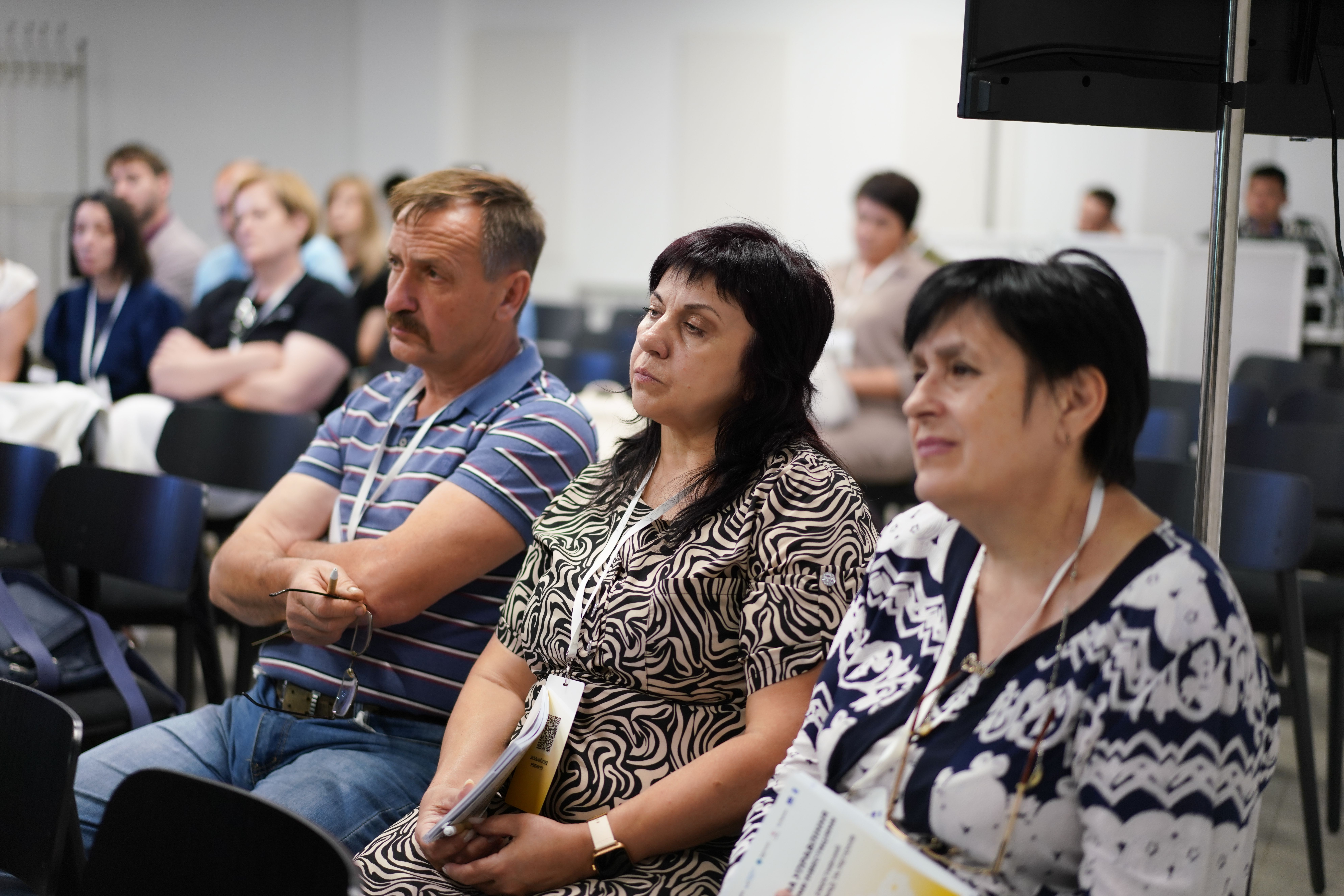
The event brought together over 500 participants, including representatives from the Ministry for Development, as well as the Dnipropetrovsk, Zaporizhzhia, and Kirovohrad regions and communities, the DREAM Project Office, civil society, experts, and international partners.
Participants received a detailed overview of the key stages involved in implementing the PIM reform at both regional and local levels. Particular attention was given to the legislative framework of the reform, the importance of establishing a management structure at community and regional levels, developing Medium-Term Priority Public Investment Plans (MIP), preparing public investment projects and programs, forming sectoral portfolios and the Single Project Pipeline, and opportunities for attracting funding.
Deputy Minister for Development of Communities and Territories Oleksii Riabykin thanked the participants for their proactiveness and emphasized the importance of learning to better prepare for changes and successfully implement projects aligned with local development strategies and people’s needs.
He also highlighted the role of the DREAM Project Office team in implementing the PIM reform.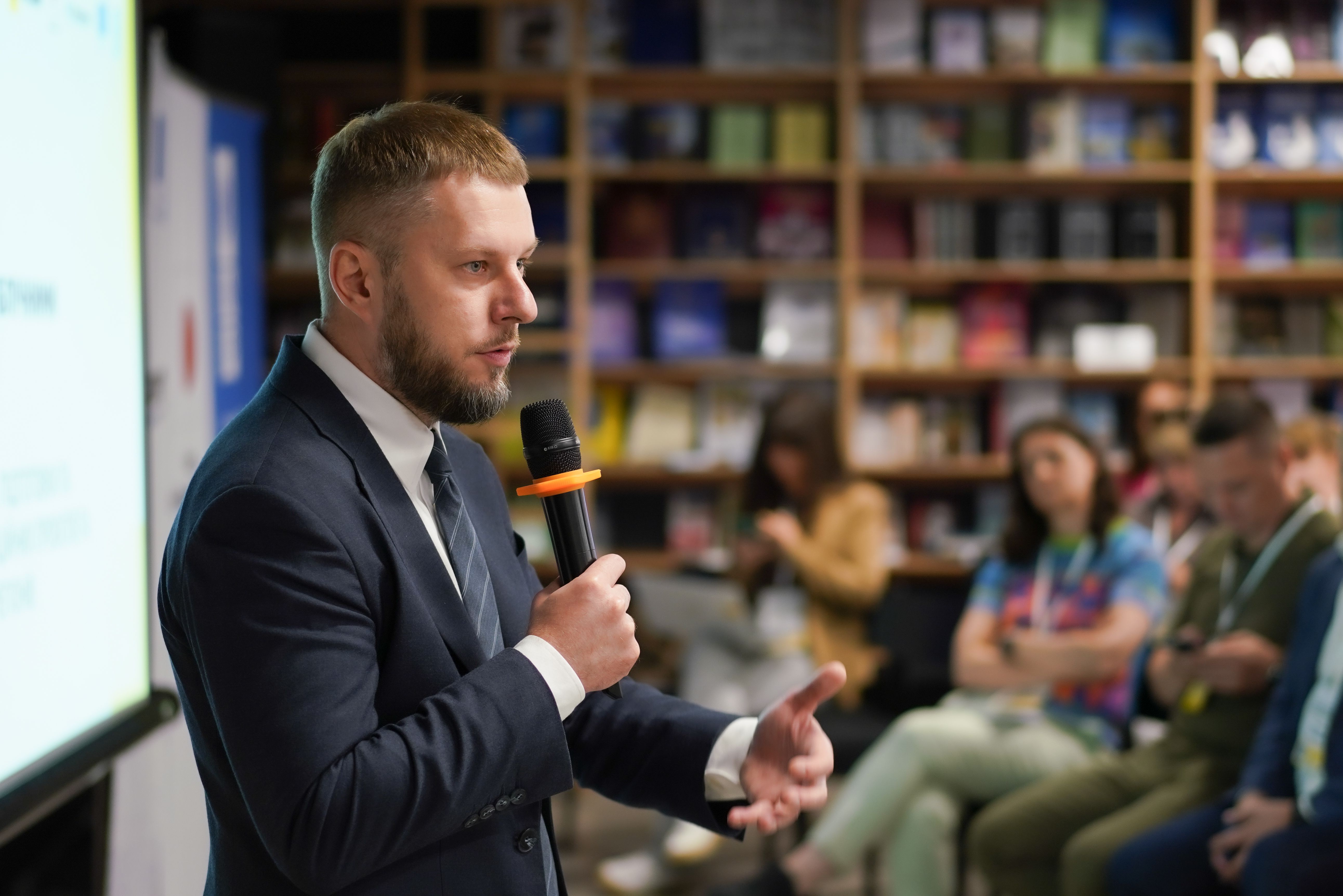
“The reform transforms approaches to public finance management. In particular, it facilitates the unification of planning processes, identifying priority investment areas at the community, regional, and national levels in line with their respective development strategies. This provides all participants in the process with a clear understanding of what is required to implement a specific project, including the number of personnel needed, the necessary funding amount, and the sources from which it can be obtained. The MIP serves as a guide in this process, outlining investment priorities and allocating resources accordingly. It is important to understand that the country has limited resources and to attract international funding, we must form project and program portfolios that are well-grounded, properly assessed, and identified as a priority for implementation,” said Oleksii Riabykin.
Ana Lucatela, Head of Regional Recovery at UNDP Ukraine, noted that access to international funds and the ability to utilize their resources require mastering strategic approaches to planning and managing public investments. A systematic approach enables better coordination of assistance and directs it to projects that truly matter to society. In addition to explaining the overall logic of the PIM reform, its principles, and approaches, participants were introduced to the digital architecture of the reform — specifically, the features of the DREAM ecosystem, which serves as a “single window” for managing public investments.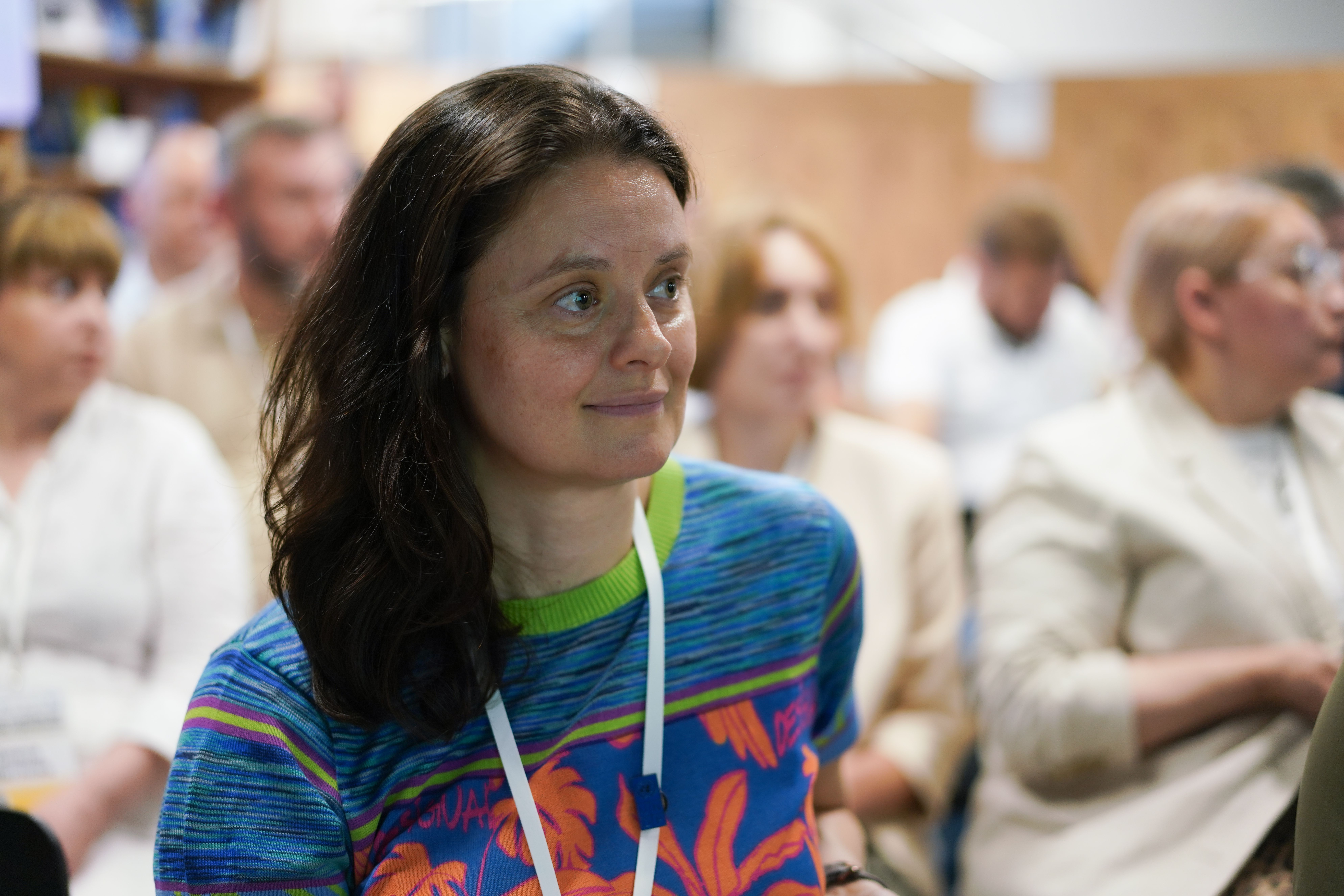
All processes — from MIP development, project and program preparation at the national, regional, and community levels, their assessment and prioritization, to the formation of sectoral portfolios and UPPs and their implementation — occur within the digital system. This ensures transparency and accountability. DREAM supports the PIM reform at all stages of its implementation, particularly in terms of user training and support.
“The main task of the reform is to build a public investment management system that enables Ukraine to utilize European structural funds effectively. To achieve this, planning and investment management approaches must be synchronized with international practices. Currently, there are 18 different mechanisms for preparing public investment projects in Ukraine. To unify them, a significant transformation is needed. Our common goal is to create an investment ‘menu’ in the form of project portfolios within DREAM, enabling more effective public finance management at all levels. The Government of Ukraine, together with the DREAM Project Office team, will provide methodological support to all process participants to ensure a swift adaptation to these changes,” added DREAM Project Office Head Viktor Nestulia.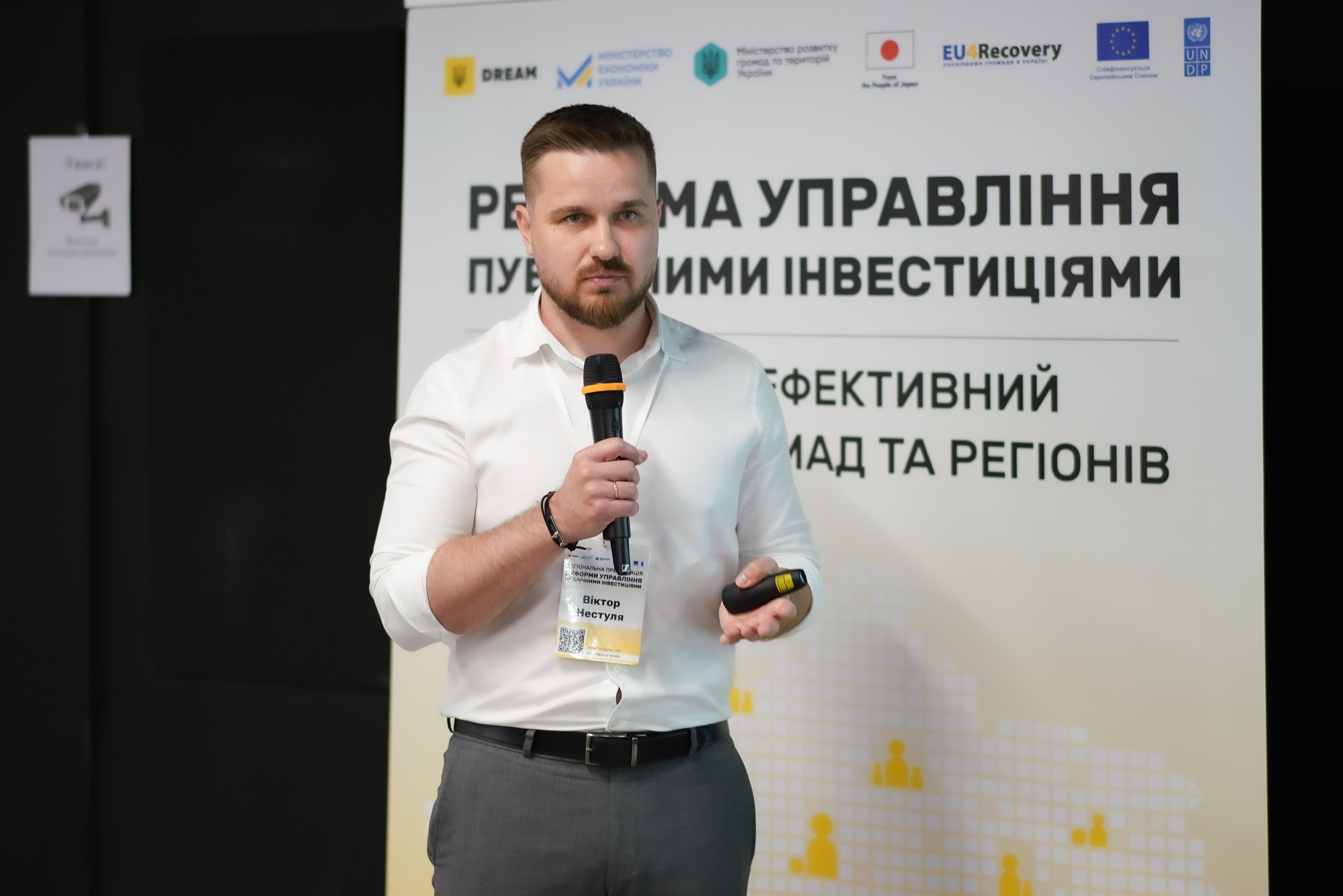
Special attention was given to the formation of the MIP. Oleksandr Matsapura, Head of Partner and User Relations at the DREAM Project Office, discussed the principles of developing a medium-term plan, including priority public investment areas, target indicators, and compliance criteria. Based on the MIP, budget financing limits are defined, and public investment projects and programs are formed. He stressed that the plan is developed over three years, approved along with the budget declaration, and reviewed annually to reflect changes in priorities and needs at all levels.
Anastasiia Prokhorova, Partner and User Relations Manager at the DREAM Project Office, explained how communities could identify priority public investment areas aligned with the state MIP and demonstrated how to prepare projects and programs, assess them, and set priorities using concrete examples. At the end of the event, participants were invited to take a survey on their awareness of the reform. This will help gain a clearer understanding of how communities perceive the reform and gather suggestions for improving its implementation process.
We kindly ask you to complete the survey at the following link: https://forms.gle/x3Ga7QdaKV1C77Pd7
These events aim to strengthen community capacity and prepare them for changes in public investment management approaches, as well as to collect feedback and proposals to enhance the implementation process of the reform. You can read a general description of the reform at the following link: https://bit.ly/46auV5p
The event was held jointly by the Ministry for Communities and Territories Development of Ukraine, the DREAM Project Office, and Open Contracting Partnership with the support of the United Nations Development Programme (UNDP) in Ukraine as part of UNDP’s flagship partnership with the European Union “EU4Recovery — Empowering Communities in Ukraine”, as well as the “Support to Inclusive Recovery for Resilience and Human Security in Ukraine” project funded by the Government of Japan.
